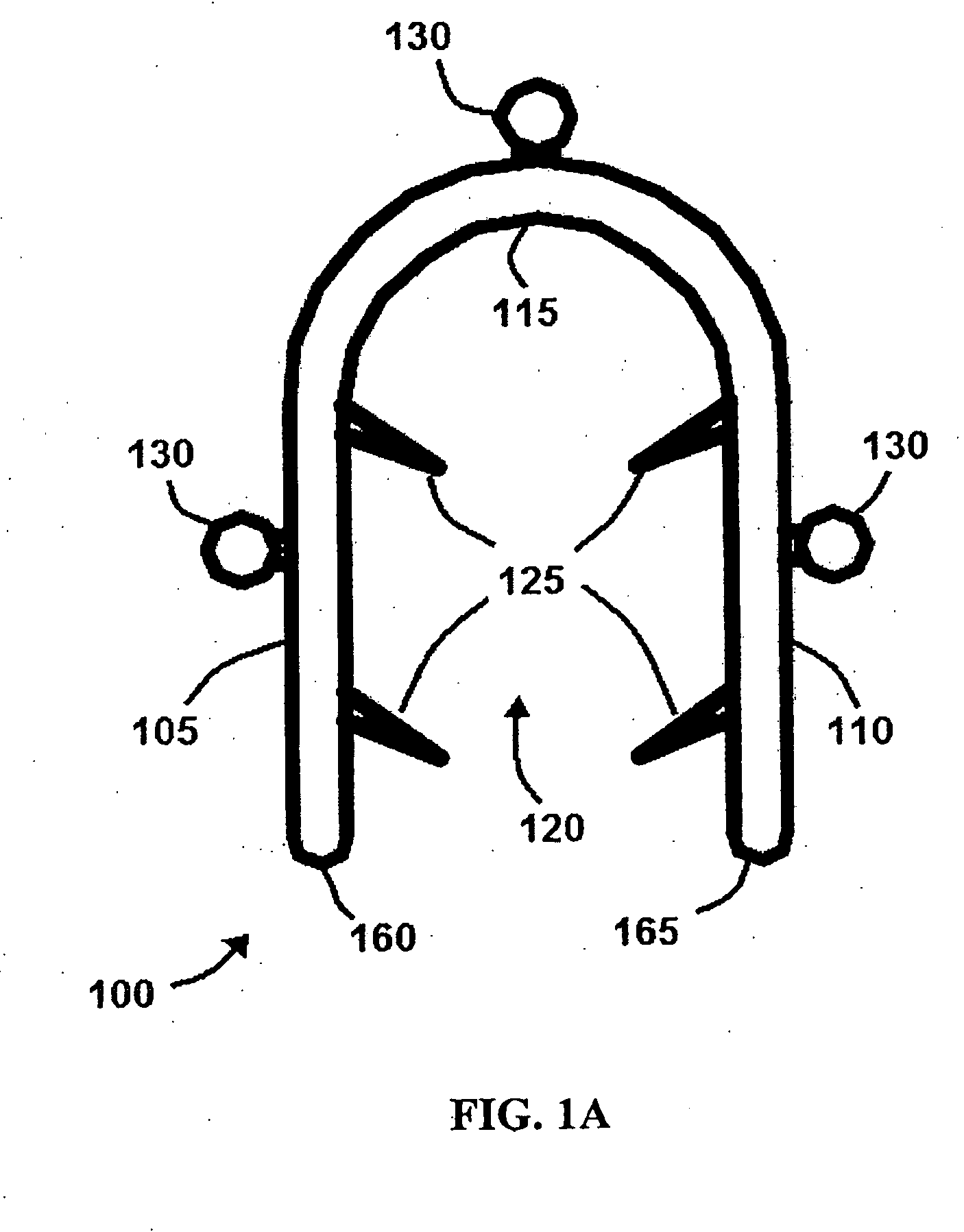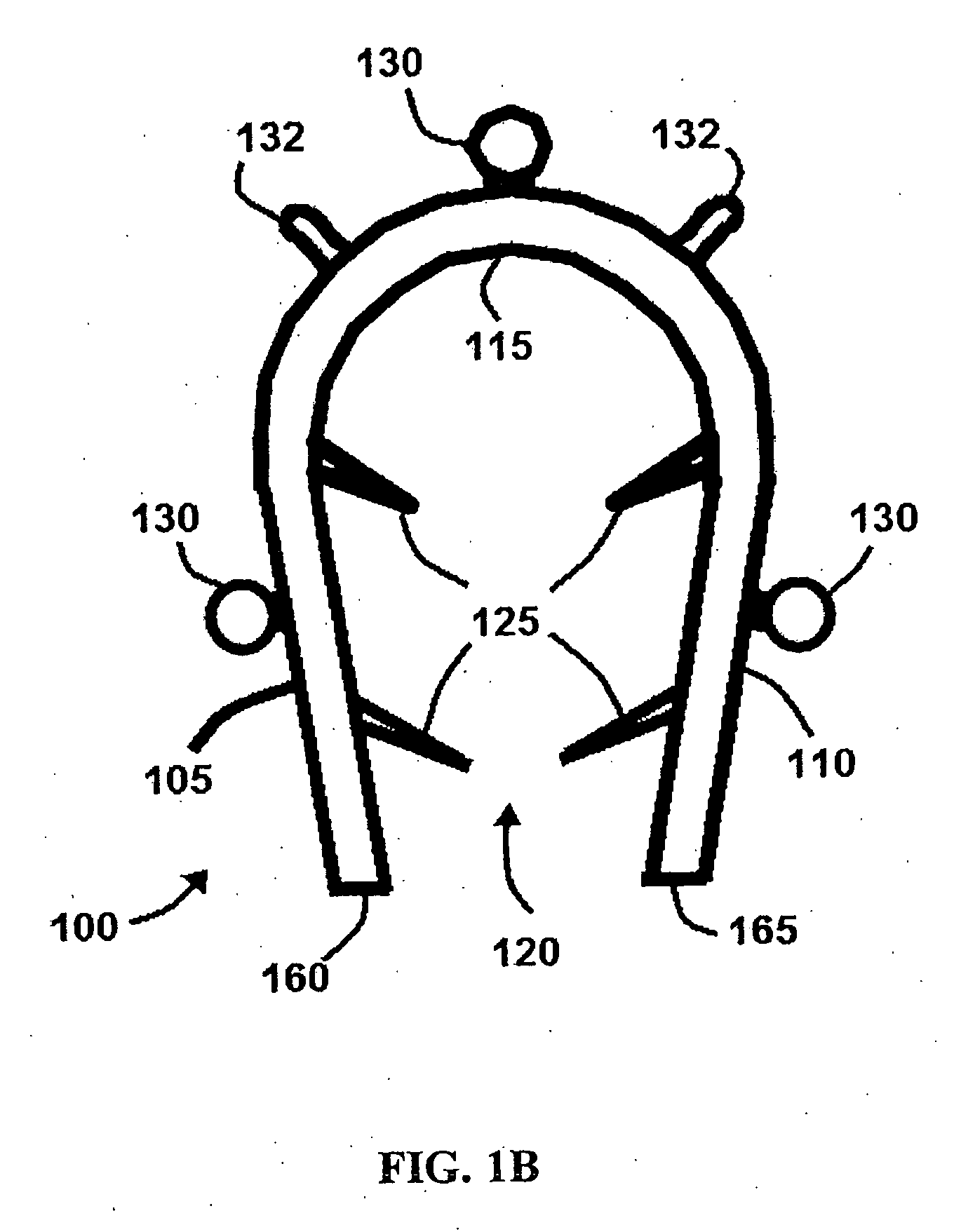Bone tissue fixation device and method
a technology of bone tissue and fixation device, which is applied in the field of bone tissue fixation device and method, can solve the problems of serious injuries to patients, changes in the internal structure and external form of the bone, and difficulty in accessing the portion of the vertebrae needed to insert the pedicle screw, etc., and achieves less invasive, less invasive, and significant distraction
- Summary
- Abstract
- Description
- Claims
- Application Information
AI Technical Summary
Benefits of technology
Problems solved by technology
Method used
Image
Examples
Embodiment Construction
[0104]FIGS. 1A, 1B and 2, illustrate end views and a side view of exemplary embodiments of a clamp 100. Clamp 100 comprises a first side 105, a second side 110, and a coupling portion 115 that couples first side 105 to second side 110. First side 105 and second side 110 comprise end portions 160 and 165, respectively, that are distal from coupling portion 110. Clamp 100 further comprises an open space 120 between first side 105 and second side 110. In the exemplary embodiment shown, first side 105 and second side 110 comprise gripping members 125 and receiving members 130. As shown in FIG. 2, clamp 100 also comprises a first end 145 and a second end 150.
[0105]In certain embodiments, gripping members 125 may be small projections, prongs, tines, tabs, barbs or spikes directed toward open space 120. Gripping members 125 may also be used in combination with cement, epoxy, banding, or small screws in exemplary embodiments. In certain embodiments, gripping members 125 may be formed by def...
PUM
 Login to View More
Login to View More Abstract
Description
Claims
Application Information
 Login to View More
Login to View More - R&D
- Intellectual Property
- Life Sciences
- Materials
- Tech Scout
- Unparalleled Data Quality
- Higher Quality Content
- 60% Fewer Hallucinations
Browse by: Latest US Patents, China's latest patents, Technical Efficacy Thesaurus, Application Domain, Technology Topic, Popular Technical Reports.
© 2025 PatSnap. All rights reserved.Legal|Privacy policy|Modern Slavery Act Transparency Statement|Sitemap|About US| Contact US: help@patsnap.com



